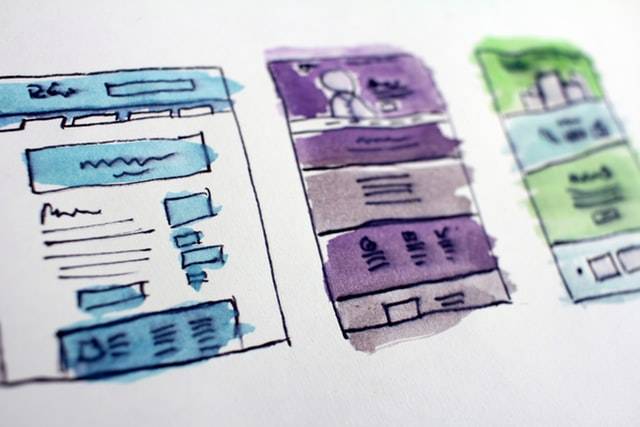
Understanding Landing Pages
Landing pages play a crucial role in the world of ecommerce. They serve as the entry point for potential customers and are designed to drive specific actions, such as making a purchase or filling out a form. In this section, we will explore what landing pages are and why they are essential for ecommerce.
What are Landing Pages?
Landing pages are standalone web pages that are distinct from a website’s main navigation. They are specifically created to guide visitors towards a specific action or conversion goal. Unlike other web pages, landing pages are laser-focused and free from distractions, providing visitors with a seamless experience that encourages them to take the desired action.
The content on a landing page is carefully crafted to align with a specific marketing campaign or promotion. It is designed to capture the attention of users and direct them towards the intended goal, whether it’s making a purchase, signing up for a newsletter, or downloading a resource. By removing unnecessary elements and focusing on a singular objective, landing pages have the power to increase conversions and drive business growth.
To learn more about the design and optimization of landing pages, check out our articles on landing page design and landing page optimization.
Importance of Landing Pages for Ecommerce
In the world of ecommerce, landing pages play a crucial role in driving sales and generating leads. Here are some key reasons why landing pages are important for ecommerce:
- Focused Messaging: Landing pages allow ecommerce businesses to deliver a targeted message to their audience. By tailoring the content to match a specific promotion or campaign, businesses can capture the attention of potential customers and increase the likelihood of conversion.
- Increased Conversions: Landing pages are designed to guide visitors towards a specific action, such as making a purchase. By removing distractions and providing a clear path to conversion, landing pages have the potential to significantly increase conversion rates and boost revenue.
- Improved Advertising ROI: Landing pages are often used in conjunction with online advertising campaigns. By creating dedicated landing pages for each campaign, businesses can ensure that their ad messaging aligns perfectly with the landing page content. This improves the overall advertising ROI by increasing the relevance and effectiveness of the ads.
- Data and Insights: Landing pages provide valuable data and insights about user behavior and preferences. By tracking metrics such as click-through rates, bounce rates, and conversion rates, ecommerce businesses can gain a deeper understanding of their audience and make data-driven decisions to optimize their marketing efforts.
For more information on maximizing the effectiveness of landing pages, check out our articles on landing page lead generation and landing page conversion rate.
Understanding the importance of landing pages and implementing best practices can significantly impact the success of an ecommerce business. By creating compelling and optimized landing pages, businesses can drive conversions, increase revenue, and ultimately, achieve their marketing goals.
Creating Effective Landing Pages
To create landing pages that drive conversions, it’s essential to focus on key elements that make them effective. A well-designed landing page can capture the attention of visitors and encourage them to take the desired action. In this section, we will explore three essential components of effective landing pages: clear and compelling headlines, engaging and relevant content, and captivating call-to-action (CTA) buttons.
Clear and Compelling Headlines
The headline of your landing page is the first thing visitors see, and it plays a crucial role in grabbing their attention. A clear and compelling headline should clearly communicate the value proposition of your offer and entice the visitor to explore further. It should be concise, persuasive, and aligned with the expectations set by any ads or promotions that led the visitor to your landing page.
Consider using strong and actionable words in your headline to create a sense of urgency or excitement. Use bold or italic formatting to make important words stand out. For example, if you’re offering a discount on a product, a headline like “Limited Time Offer: Get 50% Off Today!” can be highly effective in capturing the visitor’s attention.
Engaging and Relevant Content
Once you’ve captured the visitor’s attention with a compelling headline, it’s crucial to provide engaging and relevant content on your landing page. The content should clearly explain the benefits of your offer and address any concerns or questions the visitor may have.
Use concise and persuasive language to highlight the unique selling points of your product or service. Break your content into short paragraphs and use bullet points or numbered lists to make it easily scannable. This allows visitors to quickly grasp the key information without feeling overwhelmed.
To further engage your audience, consider incorporating visual elements such as high-quality images or videos that showcase your product or service in action. Visuals can help create a connection with your visitors and enhance their understanding of your offer. For more information on using videos on landing pages, check out our article on landing page videos.
Captivating Call-to-Action (CTA) Buttons
A well-designed and captivating call-to-action (CTA) button is essential for guiding visitors towards the desired action on your landing page. The CTA button should be prominently displayed and use compelling language that motivates visitors to click.
To create an effective CTA button, consider the following tips:
- Use contrasting colors to make the button stand out from the rest of the page.
- Make the text on the button concise, action-oriented, and personalized. For example, instead of a generic “Submit” button, use a more specific and persuasive phrase like “Get My Free Ebook Now!”
- Consider the placement of the CTA button. It should be located in a prominent position on the page and easily accessible without excessive scrolling.
Remember to consistently test and optimize your CTAs to find the most effective combination of design, copy, and placement. A/B testing can help you identify the best-performing elements and make data-driven decisions for continuous improvement. For more information on A/B testing and landing page optimization, check out our article on landing page optimization.
By focusing on clear and compelling headlines, engaging and relevant content, and captivating CTAs, you can create landing pages that effectively capture visitor attention and drive conversions. Experiment with different approaches, track the performance of your landing pages using tracking and analytics, and make iterative improvements based on the data you gather.
Design Elements for Landing Pages
When it comes to designing effective landing pages, certain elements play a crucial role in capturing the attention of visitors and converting them into customers. In this section, we will explore three key design elements: clean and professional design, consistent branding, and the use of high-quality images.
Clean and Professional Design
A clean and professional design is essential for creating a positive first impression and establishing credibility. It’s important to avoid clutter and distractions that could divert the visitor’s attention away from your main message.
Focus on using ample white space to create a sense of visual balance and make your content more readable. Choose fonts that are easy to read and ensure that the text is legible against the background. Use headings, subheadings, and bullet points to break up the content and make it more scannable.
Furthermore, pay attention to the layout and organization of your landing page. Place key elements strategically to guide the visitor’s eye towards important information and calls-to-action (CTAs). A well-structured and easy-to-navigate design enhances the overall user experience.
Consistent Branding
Consistent branding is crucial for building recognition and trust with your audience. Ensure that your landing page design aligns with your brand’s visual identity, including your logo, color scheme, and typography. Consistency in branding across different touchpoints helps reinforce your brand message and enhances the overall user experience.
Incorporate your brand elements into the design of your landing page, such as using your brand’s primary colors for buttons and headings. This creates a cohesive and professional look, making it easier for visitors to associate your landing page with your brand.
Use of High-Quality Images
Images can evoke emotions and visually communicate your message more effectively than text alone. Incorporating high-quality images that are relevant to your product or service can help capture the attention of visitors and make your landing page more engaging.
Choose images that align with your brand and resonate with your target audience. Avoid using generic stock photos and opt for authentic images that reflect your brand’s values and personality. High-quality images not only enhance the visual appeal of your landing page but also contribute to a more professional and trustworthy image.
Consider using a gallery or slider to showcase multiple images that highlight different aspects of your product or service. This allows visitors to get a better understanding of what you offer and increases their likelihood of taking the desired action.
By implementing a clean and professional design, maintaining consistent branding, and incorporating high-quality images, your landing page can create a visually appealing and engaging experience for visitors. Remember to regularly analyze and optimize your landing page performance based on data to continuously improve your conversion rates. For more tips on landing page optimization, check out our article on landing page optimization.
Optimization Techniques for Landing Pages
To ensure the success of your landing pages, it’s crucial to implement optimization techniques that enhance user experience and drive conversions. The following techniques are essential for maximizing the effectiveness of your landing pages: mobile responsiveness, fast loading speed, and A/B testing for continuous improvement.
Mobile Responsiveness
With the increasing use of mobile devices, it’s imperative that your landing pages are mobile responsive. This means that the design and layout of your landing pages adapt seamlessly to different screen sizes, ensuring a consistent and user-friendly experience across devices.
A mobile-responsive landing page accommodates the needs of mobile users, providing easy navigation, legible text, and optimized images. This optimization technique enables visitors to interact with your landing page effortlessly, regardless of whether they are using a smartphone, tablet, or desktop computer. For more information on mobile landing pages, check out our article on mobile landing pages.
Fast Loading Speed
In today’s fast-paced digital landscape, fast loading speed is crucial for retaining visitors and encouraging them to take action on your landing page. Slow-loading landing pages can lead to frustration and high bounce rates, negatively impacting your conversion rates and overall user experience.
To improve loading speed, optimize your landing page by minimizing the size of images, reducing the number of external scripts, and enabling caching. Compressing images without compromising their quality can significantly decrease loading times. Additionally, leveraging browser caching can help returning visitors load your landing page faster.
Regularly monitor and analyze your landing page’s loading speed using tools like Google PageSpeed Insights or GTmetrix. Aim for a loading time of three seconds or less to provide a seamless experience for your visitors.
A/B Testing for Continuous Improvement
A/B testing, also known as split testing, is a data-driven approach that allows you to compare two different versions of your landing page and determine which one performs better. By creating multiple variations and testing elements such as headlines, call-to-action buttons, colors, or layouts, you can optimize your landing pages for improved conversions.
To conduct A/B testing effectively, define a single objective for each test and make incremental changes. For example, you could test two different headlines to see which one generates a higher click-through rate. Continuously monitor the performance of your landing pages, and based on the data collected, implement the changes that yield better results.
Remember, A/B testing is an ongoing process. Even small improvements can have a significant impact on your landing page’s conversion rate. By regularly analyzing and optimizing your landing pages, you can continually improve their effectiveness and drive better results. For more information on landing page optimization, check out our comprehensive guide on landing page optimization.
Optimizing your landing pages for mobile responsiveness, fast loading speed, and utilizing A/B testing will contribute to the overall success of your campaigns. These techniques ensure that your landing pages are accessible, engaging, and continuously improving based on data-driven insights.
Conversion Optimization Strategies
To maximize the effectiveness of your landing pages, it’s important to implement conversion optimization strategies. These strategies are designed to encourage visitors to take action and convert into customers. In this section, we will explore three essential conversion optimization strategies: simplified forms, social proof and testimonials, and limited time offers and urgency.
Simplified Forms
When it comes to converting visitors into leads or customers, simplicity is key. Lengthy and complex forms can often discourage users from completing them, leading to higher bounce rates. To optimize your landing page for conversions, it’s crucial to keep your forms simple and user-friendly.
Consider asking for only the essential information that you need to follow up with the visitor. The fewer fields a form has, the more likely visitors are to complete it. Additionally, use clear and concise instructions to guide users through the form-filling process. By streamlining your forms, you can increase the chances of capturing valuable leads. For more tips on creating effective forms, check out our article on landing page lead generation.
Social Proof and Testimonials
Building trust with your visitors is crucial for conversion. Incorporating social proof and testimonials on your landing page can help establish credibility and convince potential customers to take the desired action. Social proof can take various forms, such as customer reviews, ratings, case studies, and endorsements from influencers or industry experts.
Testimonials from satisfied customers can provide valuable insights and reassure visitors that your product or service delivers on its promises. When using testimonials, ensure they are authentic, specific, and relevant to the product or service being promoted. Including the customer’s name and photo can also enhance the credibility of the testimonial. To learn more about effective landing page elements, read our article on best landing page examples.
Limited Time Offers and Urgency
Creating a sense of urgency can be a powerful motivator for visitors to take immediate action. Incorporating limited time offers, such as discounts, exclusive deals, or time-limited promotions, can create a sense of urgency and encourage visitors to convert.
Displaying countdown timers or highlighting limited availability can further enhance the urgency factor. When using urgency tactics, it’s important to be genuine and transparent. Avoid false scarcity or misleading claims, as this can harm your brand’s reputation and trustworthiness. For more strategies on optimizing your landing page for conversions, check out our article on landing page optimization.
By implementing these conversion optimization strategies, you can enhance the performance of your landing pages and increase your chances of converting visitors into valuable leads or customers. Remember to continuously monitor and analyze the performance of your landing pages, making data-driven adjustments to improve conversion rates over time. For more insights on tracking and optimizing landing page performance, read our article on landing page conversion rate.
Analyzing Landing Page Performance

Once your landing pages are live and generating traffic, it’s crucial to analyze their performance to identify areas for improvement and optimize your conversion rates. Tracking and analyzing data allows you to make data-driven decisions and refine your landing page strategy. In this section, we will explore the importance of tracking and analytics, the key metrics to measure, and the process of iterative optimization based on data.
Tracking and Analytics
To effectively analyze the performance of your landing pages, it’s essential to implement tracking and analytics tools. These tools provide valuable insights into user behavior, traffic sources, conversion rates, and more. By understanding how visitors interact with your landing pages, you can make informed decisions about optimizing their effectiveness.
Google Analytics is a popular and powerful tool that provides detailed data on user engagement, traffic sources, bounce rates, and conversion rates. It allows you to track and measure the performance of your landing pages, helping you identify areas of improvement.
Key Metrics to Measure
When analyzing landing page performance, several key metrics should be considered:
- Conversion Rate: The percentage of visitors who complete the desired action on your landing page, such as making a purchase or filling out a form. This metric reflects the effectiveness of your page in driving conversions.
- Bounce Rate: The percentage of visitors who leave your landing page without interacting further. A high bounce rate may indicate that visitors are not finding what they are looking for or that the page lacks relevance.
- Average Time on Page: The average amount of time visitors spend on your landing page. This metric provides insights into engagement and indicates whether your content is compelling enough to keep visitors interested.
- Exit Rate: The percentage of visitors who leave your website after viewing a specific landing page. This metric can help identify potential issues that cause visitors to abandon the conversion process.
- Click-through Rate (CTR): For landing pages that include links or buttons, the click-through rate measures the percentage of visitors who click on these elements. A high CTR indicates that visitors are engaging with your call-to-action (CTA) and progressing further into the sales funnel.
Iterative Optimization Based on Data
Analyzing the performance of your landing pages is not a one-time task but an ongoing process. By regularly reviewing the data and metrics, you can identify areas for improvement and implement iterative optimization strategies.
Make data-driven decisions by A/B testing different variations of your landing page elements, such as headlines, images, CTAs, and colors. This allows you to compare the performance of different versions and make informed changes based on actual user behavior.
Keep in mind that optimization should be a continuous effort. Regularly monitor the metrics and adjust your landing page elements accordingly to improve conversion rates and overall performance.
By leveraging the power of tracking and analytics, measuring key metrics, and implementing iterative optimization strategies, you can refine your landing pages to maximize their effectiveness and drive better results. Remember, data is your ally in making informed decisions and continuously improving your landing page performance.





